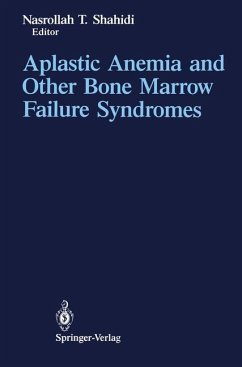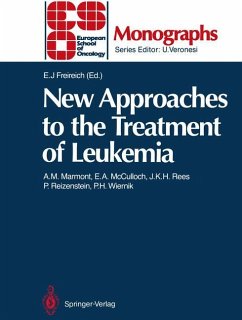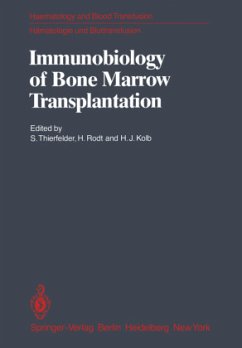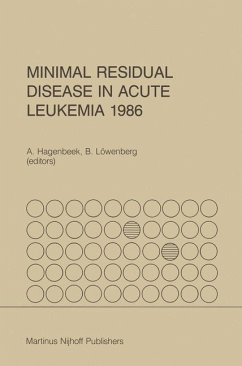
Fanconi Anemia
Clinical, Cytogenetic and Experimental Aspects
Herausgegeben von Schroeder-Kurth, Traute M.; Auerbach, Arleen D.; Obe, Günter
Versandkostenfrei!
Versandfertig in 6-10 Tagen
76,99 €
inkl. MwSt.

PAYBACK Punkte
38 °P sammeln!
Sixty years ago, G. Fanconi published a paper entitled: "Familiiire infantile pemiziosaartige Aniimie (pemizioses Blutbild und Konstitu tion)", in which he reported that this type of severe aplastic anemia represents a hereditary disease distinct from other pancytopenias of childhood (Fanconi 1927). Later this syndrome was named Fan coni anemia (FA; van Leeuwen 1933). A more recent study of the genetics of FA confirmed that the syndrome is inherited in an au tosomal recessive manner (Schroeder et al. 1976). Prenatal diagno sis in FA families showed that about 25% of fetuses are affected (Auerb...
Sixty years ago, G. Fanconi published a paper entitled: "Familiiire infantile pemiziosaartige Aniimie (pemizioses Blutbild und Konstitu tion)", in which he reported that this type of severe aplastic anemia represents a hereditary disease distinct from other pancytopenias of childhood (Fanconi 1927). Later this syndrome was named Fan coni anemia (FA; van Leeuwen 1933). A more recent study of the genetics of FA confirmed that the syndrome is inherited in an au tosomal recessive manner (Schroeder et al. 1976). Prenatal diagno sis in FA families showed that about 25% of fetuses are affected (Auerbach et al. 1985, 1986). In 1964, Schroeder et al. discovered high frequencies of chro mosomal aberrations in cultured peripheral blood lymphocytes from patients with FA. Schuler et al. (1969) reported that cells from FA patients are particularly sensitive to the chromosome-breaking activity or clastogenic effect of a polyfunctional alkylating agent. Since that time, studies of baseline and induced frequencies of chromosomal aberrations have been used for the identification of patients with FA. There is now a large body of data concerning the possible mechanism(s) underlying the hypersensitivity of FA cells to DNA cross-linking agents, the biochemical basis for which is still unknown. Complementation analysis, using cells from different FA pa tients, has demonstrated genetic heterogeneity in the syndrome.












